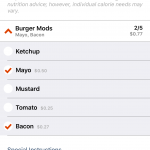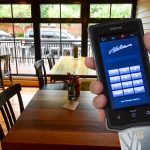By now the vast majority of credit and debit cards in your wallet most likely have made the switch over to the new EMV chips, credit card companies and banks have been rolling out cards over the last couple of years. A quick trip out to a locally owned restaurant or shop will tell you that most have yet to start using the new card technology. The lack of change poses a risk for small businesses and customers, but what is behind the slow change over?
To understand the problem we have to understand the switch. EMV cards are not new outside of the US, and they are a much more secure method for credit card transactions. The government began mandating the changeover several years ago in order to deal with rising credit card fraud, often piggy backing off the magnetic strip technology. Credit card companies had until October 2015 to get chip cards into customers hands, 2016 for debit cards.
Traditionally credit card companies held the risk for fraudulent transactions, meaning if someone stole your card the credit card company covered refunding your money. The credit card companies were happy to adopt better technology and did their part fairly quickly. At the October 2015 mark part of the risk shifted to the places where you use your card. If they did not accept the new chip cards then they became liable for any fraudulent spending as long as the card had a chip in it.
Restaurants, shops, and any other place you spend your money have a point of sale system (POS) that can do anything from just simply take money to manage your entire order. These can cost anywhere from a few hundred dollars to several thousand depending on the type and complexity.
Most of your large retailers, grocery stores, and chain restaurants made the switch early on, whereas a lot of local restaurants and shops are still using the old technology and therefore have to cover any fraudulent transactions. The reason? Volume and margins. A grocery store for example will process more money in a couple of hours than a local restaurant will do in a day. Since they are doing more transactions and at higher dollar amounts the risk is greater. If 1% of credit card transactions are fraudulent for them they will likely cover the cost of a new POS system in just a day by making the change. Where with a restaurant thanks to lower volume and lower transaction amounts the risk is spread out over time and doesn’t feel as imminent.
To compound matters in addition to the EMV change there are also plans to require customers to enter a PIN instead of signing a receipt. This adds an extra layer of security and in theory makes it to where the card never has to leave sight of the customer. The changeover for this has not been set but it is coming.
These changes make it easy for a restaurant with counter service to switch, especially ones where they only enter the total amount to be charged to the card. In fact most restaurants like that have switched. For restaurants with table service it is much more complicated. Restaurants would need multiple handheld POS terminals for the servers to use.
While the daily risk is minimum, it can catch up to a restaurant over time and have a serious impact on revenue, not to mention the customer trust factor. Especially now that we are a year into the switch. Additionally it makes sense for new restaurants to go ahead and plan for the new requirements when purchasing equipment. We reached out to our friends at Advanced POS who handle most of the POS systems used in Little Rock restaurants to see what was available.
Counter service modules, like we mentioned before, are fairly inexpensive. Most restaurants have already made the switch and those who haven’t should. Advanced POS also carries similar handheld models that can be used wirelessly and be added into existing POS systems for table side service. These are slightly more expensive than the wired versions, but still a very reasonable price.
There are a couple of options for restaurants however that not only serve the needs of the switch, but also add to the overall customer experience.
“Technology has come a long way in this area, and not all of it has to cost significantly more,” Advanced POS president Andrew Faulkner tells us. “In fact adopting some of the changes has the chance to make a huge impact on customer satisfaction and even overall sales.”
One option is a handheld system made by Aloha, which powers most restaurant POS systems, that looks a bit like a bulky smartphone. Not only can these take credit cards, but they integrate back in with the Aloha system and can put in orders and make changes right at the table. This decreases ticket times and increases order accuracy and leads to an overall better dining experience along with the more secure processing.
Another area on the rise is the use of mobile apps, which is something Advanced POS says they have been having more request to create. These mobile apps can integrate back in with the Aloha system allowing either customers or wait staff to place orders and pay all within their existing mobile phones. This significantly lowers the cost of upgrading. Even better early numbers show that ticket prices and customer frequency have risen when implementing these apps, resulting in more business for the restaurant.
Regardless the changes are coming and restaurants will have to adapt. There are major opportunities for restaurants who plan the upgrade strategically and the result should be a better overall experience for all of us customers.







